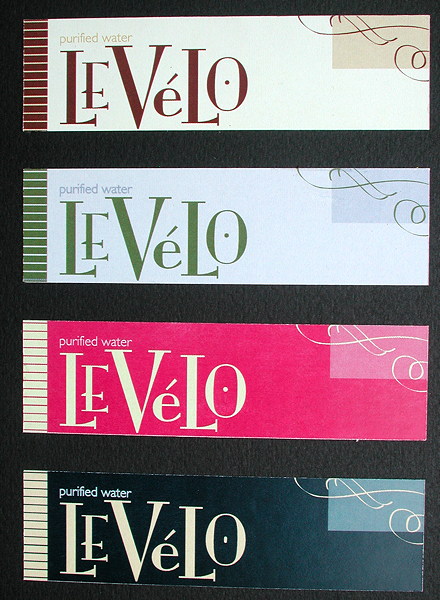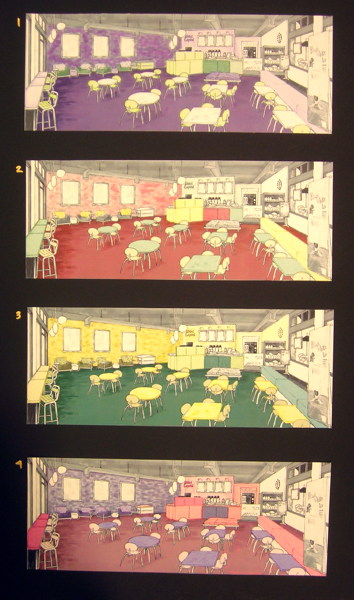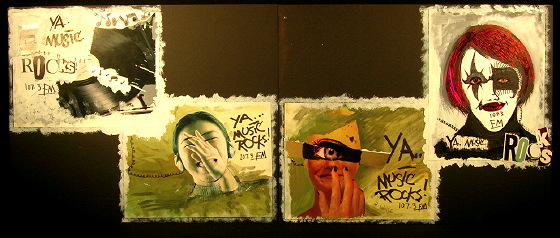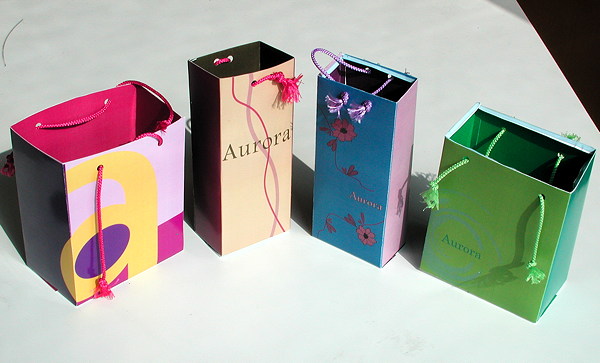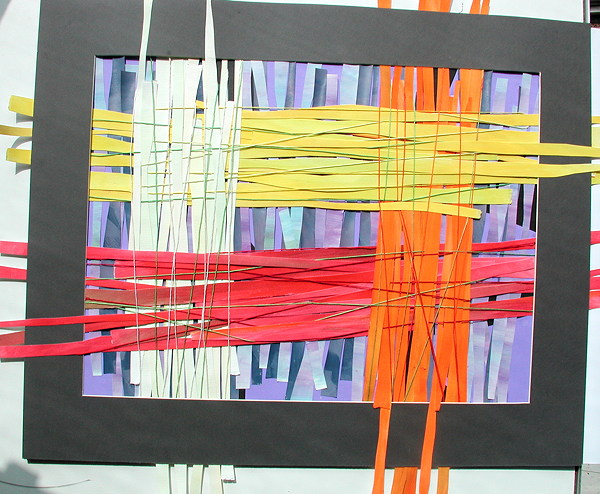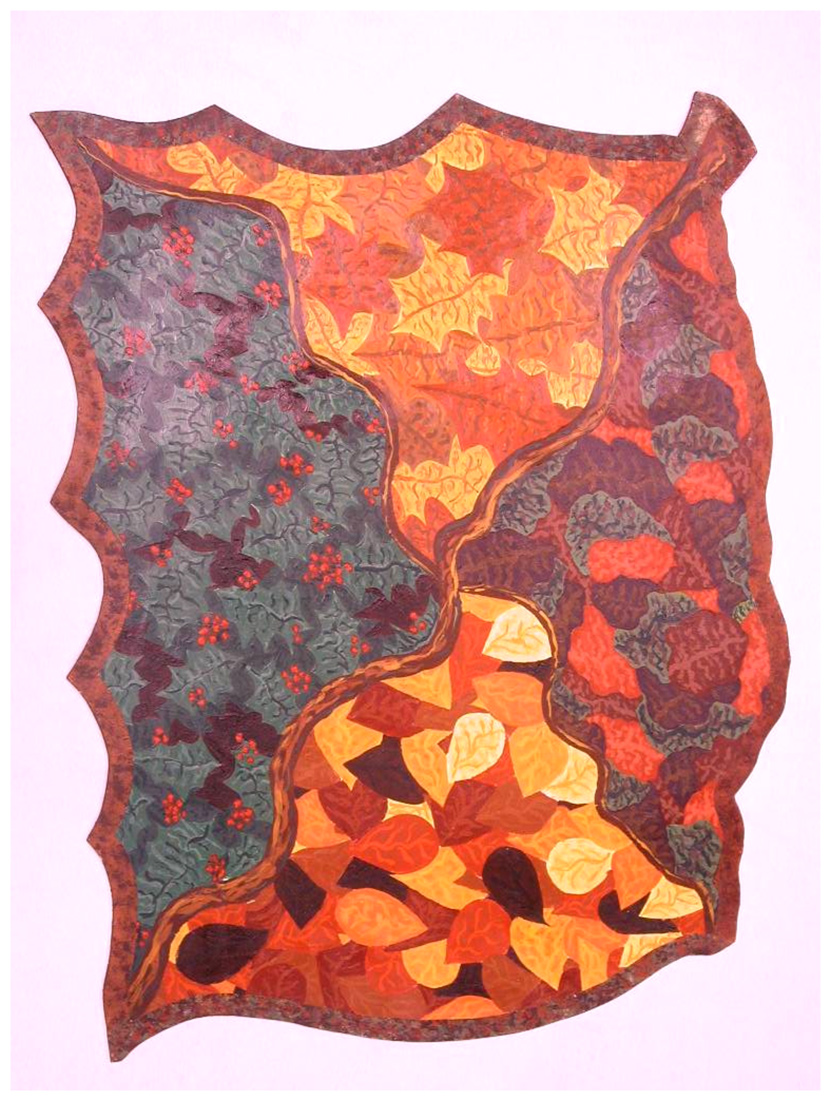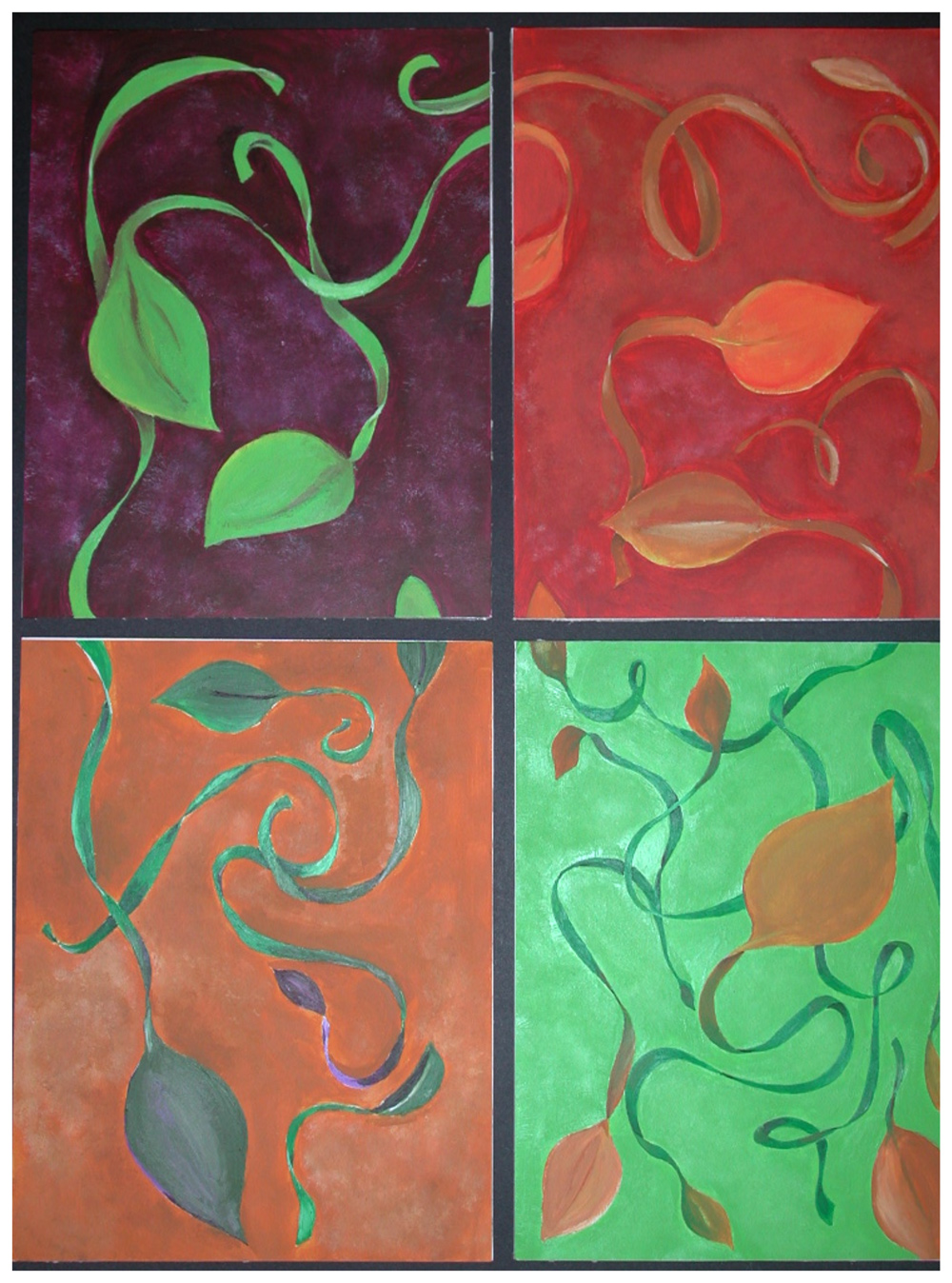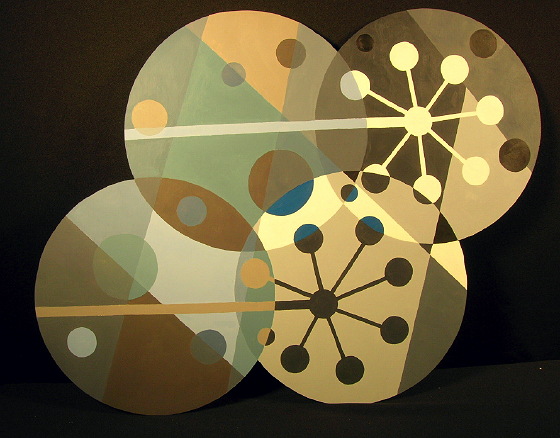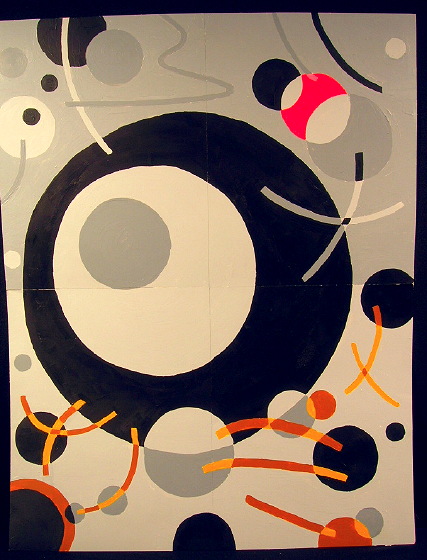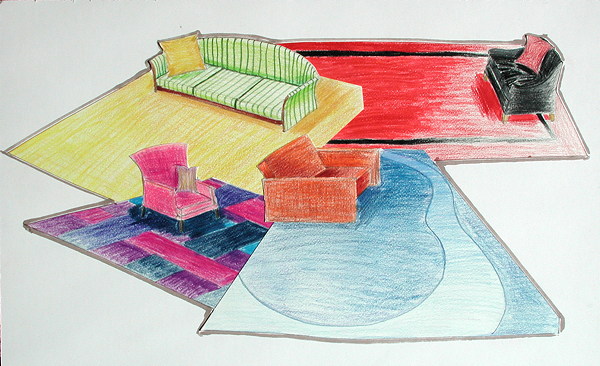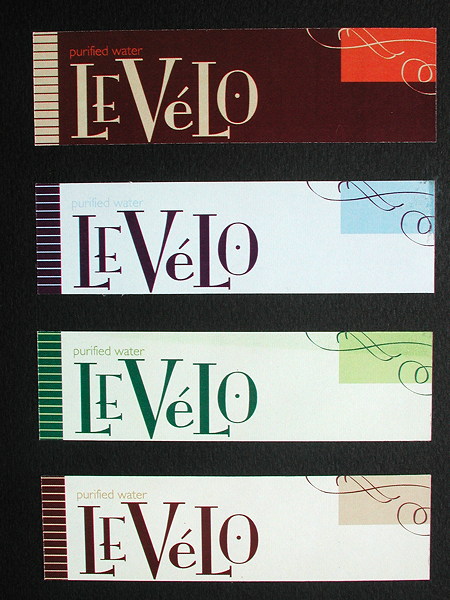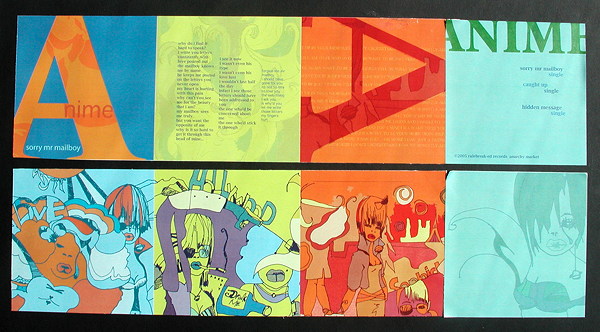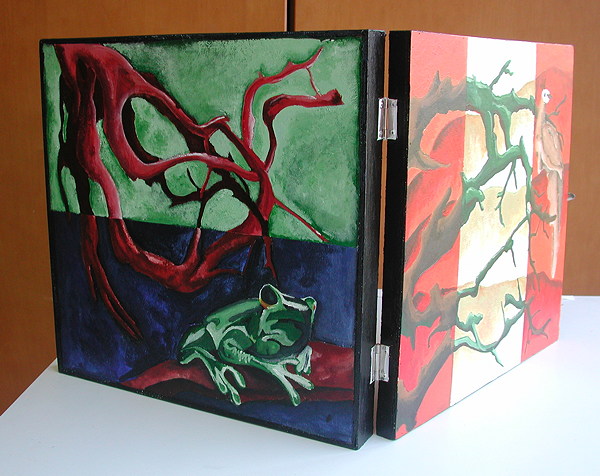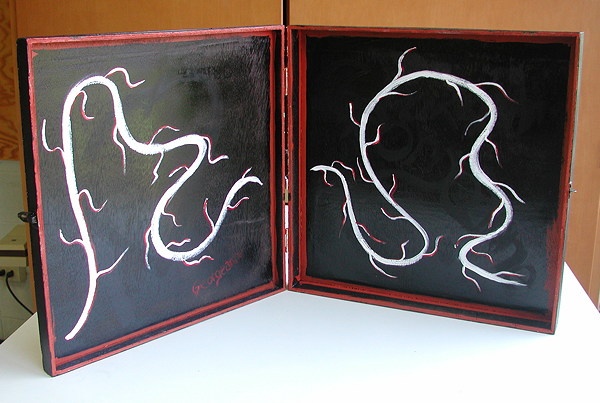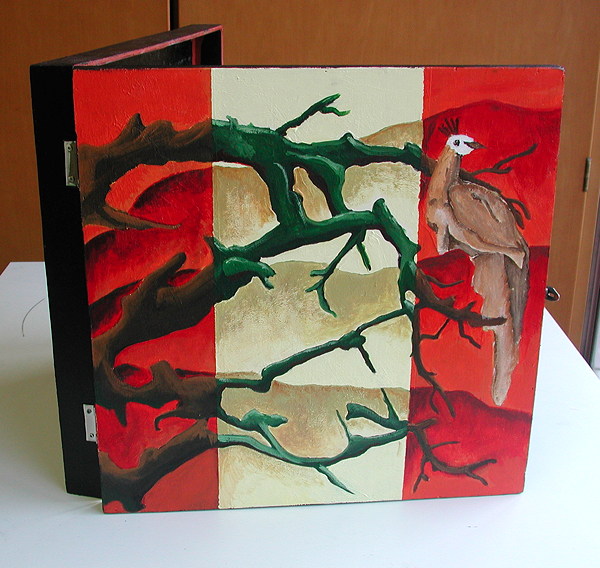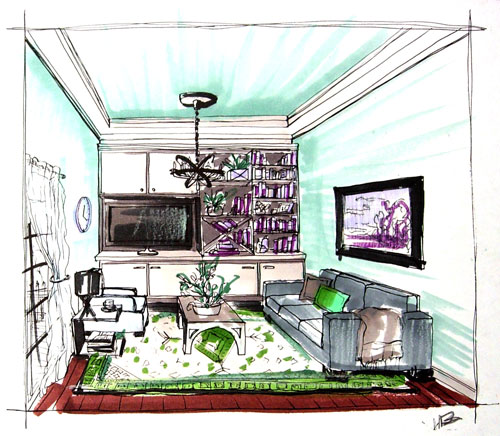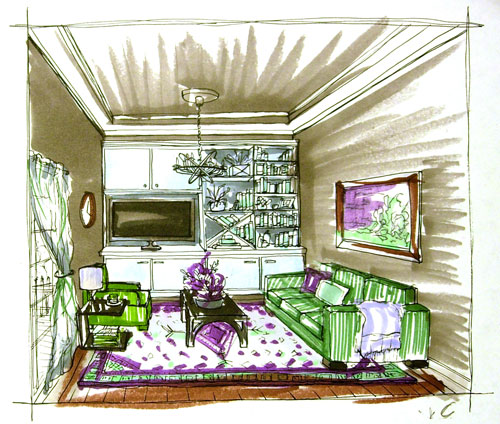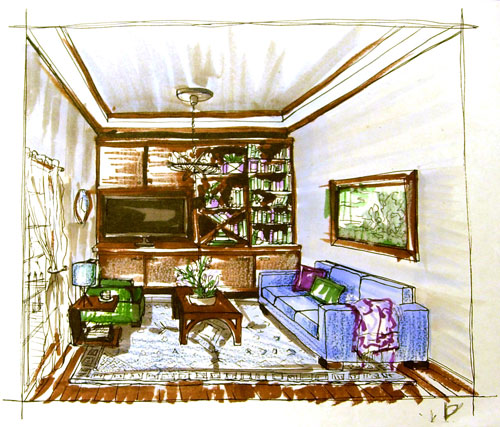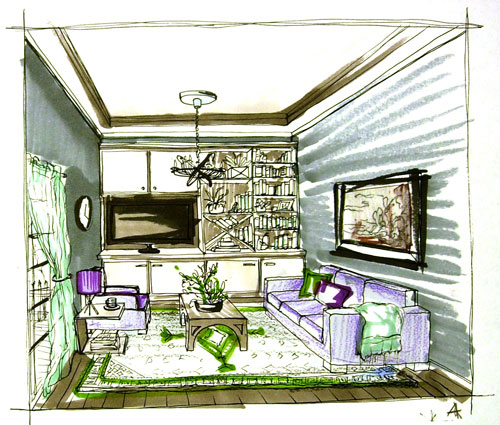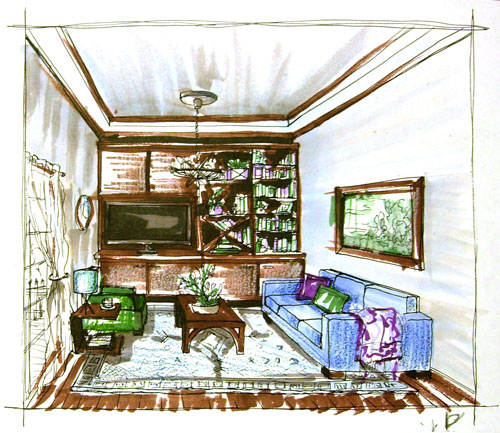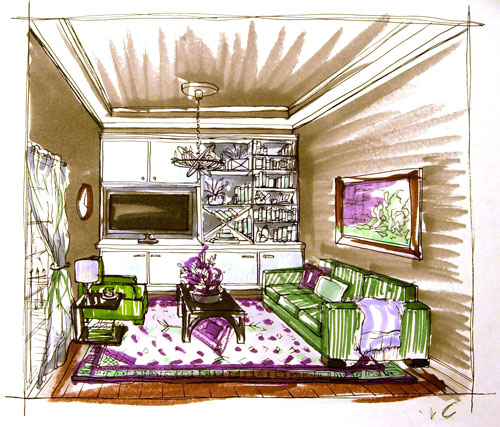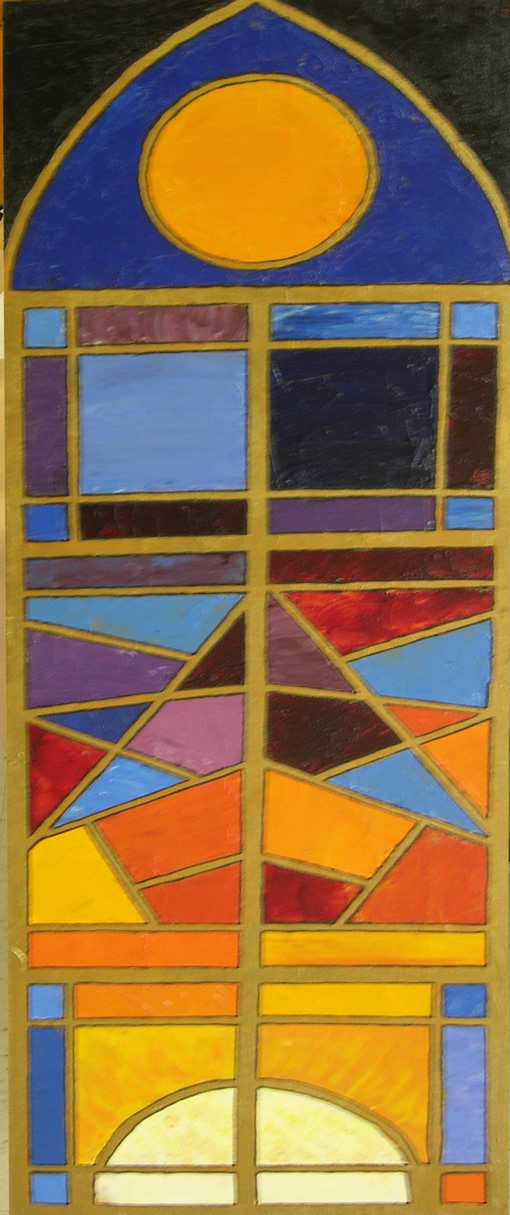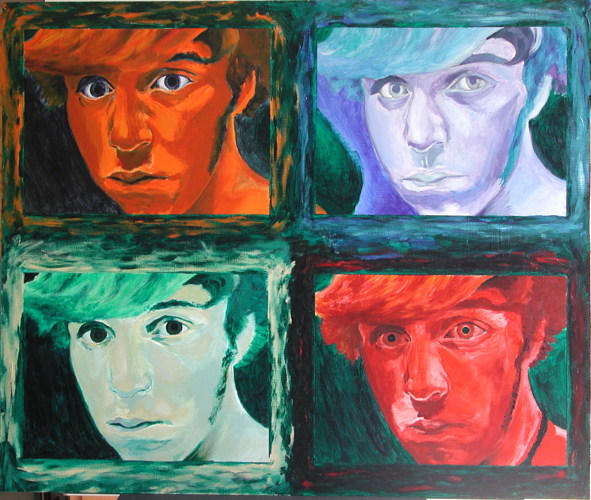Explore ways of involving color-variety into your concept.
Below are suggested strategies, but there may be more options still — conceive and create them!
Option1: Varied Color Schemes applied to a single design:
Create four versions of the same shape-design, varying color relationships only.
(this option may not be allowed on some projects — so be sure to confirm that it is OK before proceeding)
These designs are identical, except for color scheme. (more than 4 required due to limited number of colors in these schemes.) These four space designs are identical, except for color variations. Option2: Four Designs from a set or series.
Four related design differing primarily, but not only in color scheme. Each of these designs should be planned as a part of the whole set — each design is meant to work with the others.
Example Concepts:
A series of four billboards, a series of four product ads
Four different package designs for related products.
Four different interior designs offering solutions for the same space. Be sure to vary some furnishings and accessories as well as colors and finishes.
A four-panel painting (not a tryptich, but a quadrich?)
A web site with (at least) four pages, each having a unique color scheme but all pages being well-related to the others.
An annimation which cycles through four episodes or scenes (think "Disney Fantasia")
Option3: A single complex design, with four regions.
Four different "parts" or regions of a single large and/or complex design.
Example Concepts:
A painting might have four distinct areas — each with its own color scheme.
A CD packaging insert with (at least) four different panels/pages.
An interior project involving four different rooms or spaces, each formally related to each other, but each with its own color scheme.
